1. Introductio
aes vs, duos nobiles aeris-fundatur alloys, civilization enim servivit millennia.
Dum calido metallicus fulgor et similis nomenclatura saepe confundunt, hae mixturae distinctae chemicae compositiones, proprietatibus, et applications.
Ex muneribus in armis et nummis antiquis ad usus modernos in systematibus electrica et in ambitu marinis,
decisionem inter aes et aes in cardinibus numerosis criteriis: Mechanica perficientur, chemical resistentia, aesthetic preference, et sumptus efficientiam.
Intellectus eorum nuances essentialis est ad eligendam materiam rectam pro officio recti.
2. Quid est aeris?
Aes est aeris-zincum offensionis notum est eius optimum workability, pulchra specie aurea, et moderata vi mechanica.
Fretus in zinci contentus et praesentia elementorum additorum mixturae, æs potest exhibere, amplis corporis, mechanica, ac chemicis.

Est unus omnium machinarum admixtorum versatilis et late usus electrica components, Cultioribus items, plumbing fixtures, musicis, ac subtilitate machined partes.
Proprium autem aeris definiens est compositio tunabilis eius: per adjusting aeris-ut-zinci ratio et introducendis minor elementa ut prendo, tin, aluminium, manganese, Silicon, aut ferrum,
fabrum potest mos offensionis ad applicationes specificas.
Chemical compositionem & Admisce Systems
Brases typice indicatur secundum suum tempus structuram et zinci contentus:
- Alpha Brass (α-aes)
-
- Cadmiae contentum: Ad ~ XXXVII%
- Structure: Unum tempus solidum solutionem
- Proprietatibus: Optimum frigus workability, princeps ductilis, Bonum corrosio resistentia
- Applications: Alta drawing, spheara, frigus formatam
- Alpha-Beta Brass (Duplex Brass)
-
- Cadmiae contentum: 37-45%
- Structure: Duo-phase (a + b)
- Proprietatibus: Fortior et durior, sed minus ductile; idoneam ad calidum operationem
- Applications: Forgings, valvae corporum, gravibus officium caerimonias
- plumbum Brass (Liberum secans aes)
-
- Duc contentus: ~1-3%
- Proprietatibus: Superior machinabilitas ob praesentiam particularum plumbi subtiliter dispersae
- Applications: Subtilitas machined components, plumbing hardware, fasteners
- Praecipua aes Alloys
-
- Ut tinguere elementa aluminium (Al) pro viribus et corrosione resistentia, Silicon (Et) ad improved lapsum resistentia, et tin (Sn) ad auctus dezincification resistentia
- Applications: Marinus hardware, electrica terminales, ornatum applications
Communia Gradus et Signa
| Gradus | Vexillum | Typical Compositio | Characteres et Applications |
| C26000 | ASTM B135 | Cu 70%, ZN 30% | <p; optimum frigus workability; in radiator metretas, tela casings, et ornatum absumpto |
| C36000 | ASTM B16 | Cu 61.5%, ZN 35.5%, Pb ~ III% | Free-secans aes egregie machinability; apta automatic cochlea machinis |
| H62 | GB / T 5231 (SINARUM) | Cu 62%, ZN 38% | General-propositum aeris cum bona operandi calidum; in fasteners, valvae partes, et rivets |
| H59 | GB / T 5231 (SINARUM) | Cu 59%, ZN 41% | Fortius sed minus ductile; in mechanica structurae components |
| CZ108 | BS EN 12163 | Similia sunt C27200 | Alpha aes; bonum frigus formando et glutino proprietatibus; in architecturae hardware et generalis engineering |
3. Quid est Aes?
Aes lata familia aeris-fundatur alloys praesertim cum tin- commixtum,
Etsi alia elementa ut aluminium, Silicon, phosphorus, et manganese sunt etiam communes agentium offensiones in systematibus aeneis recentioribus.
Dum historice vocabulum "aes" proprie ad aes-stannum alloys refertur, nunc in mixtionibus amplis ambit variis proprietatibus discriminatim ad necessitates industriales specificas.
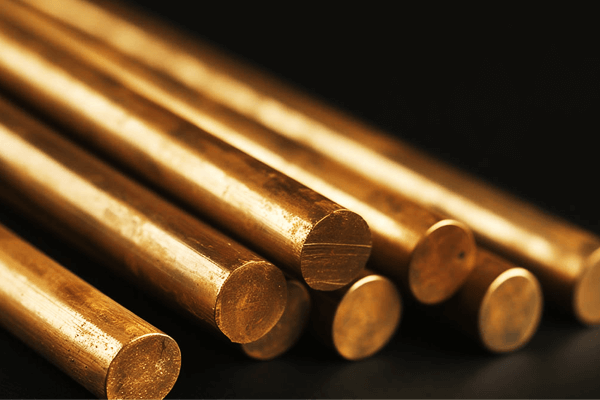
Aes notum est suum excelsum, superior corrosio resistentia, optimum lapsum perficientur, et facultas stabilis tutela patina, praesertim in dura environments.
Usus est in milibus annorum, notatione rursus ad Aevum aeneum—et pergit ut plurimum expediatur marinus, structural, electrica, artis, et afferentem applicationes.
Clavis distinctio inter aes et aes iacet in commixtione elementorum: aere praesertim aes + zinc, dum aes est fere aes + tin (aut aliis elementis sicut Al, Et, P, Mn).
Aes typice exhibet altiorem fortitudinem, durities, resistentia corrosio et metalli lassitudine, licet altiores sumptus et inferiores machinabilitas ad aes.
Chemical compositionem & Admisce Systems
Admixtiones aeneae per elementum primum tinguens ultra aeris designantur:
- Phosphor aes (Cu-Sn-P)
-
- Tin content: ~0.5-11%, vestigium phosphoro
- Characteres: Summus lassitudine resistentia, frictio, optimum vere proprietatibus
- Applications: Gestus, fontium, electrica connectors, Gears
- Aluminium aes (Cu-Al)
-
- aluminium content: ~5-12%
- Characteres: Eximia corrosio resistentia (praesertim in saltwater), excelsum
- Applications: Marinus hardware, valvulae, pumps, aerospace bushings
- Silicon Silicon (Cu-Si)
-
- Pii content: ~2-6%
- Characteres: bonum castability, corrosio resistentia, et moderata vi
- Applications: Architecturae hardware, SCULPURS, fasteners
- Manganum aeneum (Cu-Zn-Mn-Fe)
-
- Technice variante aere, sed saepe iunguntur aereis propter similes notae vires
- Characteres: Princeps distrahentes vires, bonum lapsum resistentia
- Applications: Gravis officium gestus, propeller spicula, valvae caulibus
Communia Gradus et Signa
| Gradus | Vexillum | Typical Compositio | Characteres et Applications |
| C51000 | ASTM B139 | Cu 95%, Sn 5%, P trace | Phosphor aereus; summo labore resistentia et vere proprietates; in bushings, Gears, electrica contactus |
| C54400 | ASTM B139 | Cu 95%, Sn 4%, Pb 1% | phosphoro aereo plumbeo; improved machinability ad certa components |
| C63000 | ASTM B150 | Cu 83%, Al 10%, In 5%, Fes 2% | Nickel aluminium aeneum; superior corrosio resistentiae et roboris; apta marine propellers, pumps |
| C64200 | ASTM B150 | Cu 93.5%, Al 6%, Et 0.5% | Aluminium Pii; bonum vires et corrosio resistentia; caulibus et fasteners in valvae |
| C86300 | ASTM B271 | Cu 70%, Mn 2.5%, Fes 3%, ZN 24% | Manganum aereum; summus vires adferentem offensionis; propter onus-afferentem partium mechanica |
4. Mechanical Performance of Brass vs Bronze
Cum eligendo aes inter aes ad machinationem applicationis, mechanica perficientur est in discrimine iudicium.
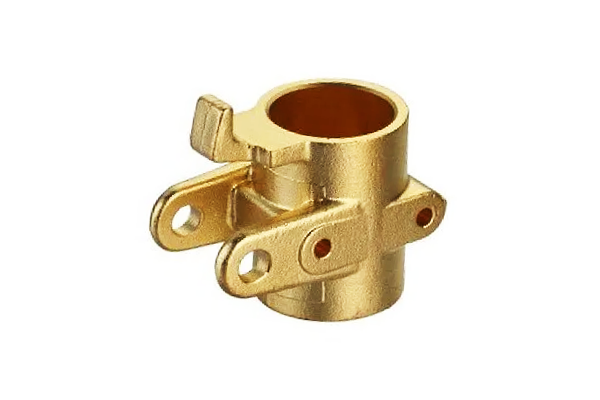
Dum utrumque aeris substructio admixtus, quorum mechanica proprietatibus variantur signanter secundum compositionem, processu, et tempus structuram.
Mechanica virtus et Ductility Comparatio
| Admisce Type | Tensile viribus (MPA) | CEDITAS (MPA) | Elongatio (%) | Lentitudo (Qualative) |
| C26000 (Cartridge Brass) | 300-500 | 100-250 | 30-50 | Moderor |
| C36000 (Liberum secans aes) | 400-550 | 250-400 | 20-35 | Moderari ad Low (ex ne contentus) |
| C51000 (Phosphor aes) | 350-550 | 200-400 | 15-30 | Altum (optimum sub cyclica onus) |
| C54400 (Phosphor Bronze Ductus) | 400-600 | 250-450 | 12-25 | Altum |
| C63000 (Aluminium aes) | 550-800 | 300-600 | 10-20 | PERPREPIDUS (labefactum et lassitudine repugnans) |
| C86300 (Manganum aeneum) | 600-850 | 400-600 | 10-20 | Altum |
Durities (Brinell, Vickers, Rockwell)
| Admisce Type | Brinell (HB) | Vickers (HV) | Rockwell (B/H) |
| C26000 Brass | ~65–110 | ~80-120 | ~RB 60-80 |
| C36000 liberum secans | ~ 110-150 | ~ 120-160 | ~RB 80-95 |
| C51000 Phos Bronze | ~80-130 | ~100-160 | ~RB 70–85 |
| C63000 Al Bronze | ~150-200 | ~ 180-230 | ~RC 25-35 |
| C86300 Mn Bronze | ~ 170-230 | ~200-270 | ~RC 25-35 |
Vita lassitudo in Cyclic Loading
| Admisce Type | patientia Limit (MPA) | Nota |
| Alpha Brass (C26000) | ~100-150 | Sensitiva ad superficiem defectuum et accentus risers |
| Al Bronze (C63000) | ~ 250-350 | Superior lassitudine resistentia |
| Phosphor aes | ~150-250 | Optimum applicationes ad cyclicum ver |
5. Brass vs Bronze: Physica & Scelerisque Properties Comparison Table
| Res | Aes (Typical range) | Aes (Typical range) | Dicta |
| Densitas | 8.3 - 8.7 G / CM³ | 7.5 - 8.9 G / CM³ | Aes magis variat per commixtionem elementorum (e.g. tin, aluminium, manganese) |
| Imprimis virtus | 45 - 65 kN·m/kg | 55 - 85 kN·m/kg | Aes plerumque plus per unum pondus |
| Scelerisque conductivity | 95 - 130 W / m K | 35 - 70 W / m K | Aes calor melius conducts; apta scelerisque translationem partium |
| Scelerisque Difusivity | ~3.5 - 4.0 mm²/s | ~1.8 - 2.8 mm²/s | Aes citius calefacit; aere madet calor mutationes |
| Coefficientem scelerisque expansion (Cte) | ~20 - 21 10⁻⁶ /K | ~16 - 18 10⁻⁶ /K | Aes melius praebet dimensionalem stabilitatem in temperatus ambigua |
| Imprimis calor capacitatem | ~0.38 J/g·K | ~0.35 J/g·K | Aes leviter melius ad calorem repono |
| Concursores scelerisque Repugnantia | Moderor | Altum | Aes crepuit sub temperatus mutatio celeri resistit |
| Dimensional stabilitatem | Moderari ad Low | Altum | Aes malle scelerisque revolutio in ambitus |
6. Acoustic & Aesthetic Quality of Brass vs Bronze
Resonantia et debilitare in instrumentis musicis (campanis, cymbala, chordis)
- Instrumenta aerea: Aes est materia primaria instrumentorum musicorum sicut tubarum, trombones, et cornibus.
Relative princeps acusticus impedimentum et bonae resonantiae proprietates sinunt eam clare producere, sonos potentes.
Facultas offensionis libere in frequentiis certis vibrandi dat instrumentis aeneis proprias tonis locupletibus. - Aes in Percussion Instruments: Aes late in instrumentis percussionis ut campanae, cymbala, et gongs.
plumbum aereum, maxime, acusticus notum est optimum possessiones.
Unicum habent compositum resonantia et debilitare, quod sequitur in calidum, dives sonus longo sustinet.
Pro exemplo, campanas ecclesiasticas ex aere profundo, sonorum sonorum ferre longinquo.
Color spectrum: flavus æs nobis subrubra nobis deaurata finitur
- Color aeris: Color aeris varius est secundum eius zinci contentum. Aesa zinci low-rufescentibus flavis, at superiores zinci magis aurei-flavi.
Hoc splendida, venustas color facit aes popularem electionem pro ornamentis applications, ut hardware ", Jewelry, et architecturae accentibus. - Color aeneus: Aes typically rufo-brunneis color est, quod leviter variari potest secundum compositionem mixturae.
In tempore, aes potest develop a patina, quae vagarentur viridi-hyacintho (in ambitibus velit) obscurior eget, addendo ad aestheticam appellationem, praesertim in arte et sculpturis architecturae. - Gilt finit: Et aes et aes deauratum dari possunt ad speciem augendam.
Gilt finitur potest vagari e lucida auri-similis coatings ad patinas antiquas magis aspectus, amplis permittens in ornatum products aesthetic options.
Artificia decorativa: etching, patiation, PROPRESSUS
- Etching: Et aes et aes signari possunt ad consilia intricata efficienda. Etching usus chemicals involvit selectas materiam a superficie removere, ostensurus desideravit forma.
Haec ars vulgo adhibetur in tabularum ornamentis fabricandis, coins, et ars obiecti. - Patination: Ut ante, aes naturaliter patina in tempore. Tamen, patinatio etiam artificiose adduci potest ad effectus proprios aestheticos.
Aes, patination ars potest creare senex aut antiquo-aspiciens finiatur. - PROPRESSUS: Plating est ars popularis alia ornamenta. Aes auro patella potest, argentum, vel nickel suam speciem augere et eam a corrosione tueri.
Aes etiam patella, licet minus commune sit ob appellationem aestheticam naturalem et potentiam ad patinam impedire progressum propriae patinae..
7. Electrica & Magnetic Properties Bronze nobis Brass
Aes nobis aes exhibent mores distinctos electricas et magneticos, qui suam convenientiam in electricis inducunt, electronic, et electro intercessiones (Tactus) applications.
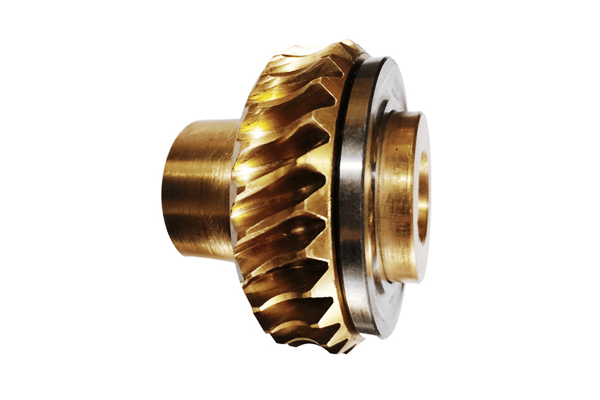
Electrical Conductivity
| Materia | Electrical Conductivity (% Iacs)* | Typical applications |
| Aes (C26000) | 15 - 28% | Connexiones electricae, terminals, switches |
| Phosphor aes (C51000) | 5 - 8% | Fontium, connexiones, humilis-current contactus |
| Aluminium aes (C63000) | 7 - 10% | Corrosio repugnans connectors, proprium contactus |
IACS = International Annealed Copper Standard (100% = conductivity purus aeris)
- aes alloys plerumque offer moderari electrica conductivity, sufficiunt ad multa elementa electrica, ubi conductivity et vires mechanicae sunt libratae.
- aenea alloys have Infra electrica conductivity, maxime ex eorum tinguentibus elementis (tin, phosphorus, aluminium),
eas minus idoneas faciens, ubi conductio electrica alta requiritur, sed valida, ubi vis mechanica et resistentia corrosio prioritized sunt.
Properties magnetica
| Materia | Magna permeability (µr) | MORDUS |
| Aes | ~1.0 (magnetica) | Per se non magneticum |
| Phosphor aes | ~1.0 (magnetica) | Magnetica |
| Manganum aeneum | leviter magnetica | Potest exhibere debilis magnetismi |
- Tum aes et aera plurima mixtura non magnetica sunt, quod utile est in applicationibus ad impedimentum magneticum minime exigendum.
- Quidam quasi aeris specialioribus manganese aes ut ostenderet parva proprietatibus magneticis, sed late manere non-ferromagnetic.
Tactus / RFI Shielding Considerationes
- Ob moderatum conductivity et non magneticam naturam, aes saepe usus est Tactus/RFI protegens components ut connexiones et clausurae, conpensat conductivity cum mechanica robur.
- Conductivity inferiores aerei reduces suam efficaciam in protegendo aere comparati,
at superior ejus corrosio resistentia duris ambitibus ubi EMI protegens est secundarium idoneus facit. - Prolixis maxime metallis plating (E.g., argentum vel aeris) vel aes vel aes melius superficies conductivity emendare potest melius Tactus/RFI perficientur.
8. Corrosio resistentia & Superficiem Moribus
- Dezincification: Aes a cadmiae leaching pati potest in ambitus mordax vel summus chloride, labefactat materiam.
- Tin Leaching: Aes aes melius resistit generali corrosioni et dezincificationem non experitur, Etsi tin potest sanguisuga in ipsis acidic media.
- Accentus corrosio fregisset: Aes est susceptibilis, maxime in ammoniaco-dives ambitibus.
- Marine euismod: Aluminium et aera Pii eximie corrosio repugnans, late in marine et ipsam structuram.
- Patina: Aes formae a stabulum, tutela patina, at aes corrumpit et eget tincidunt vel signare.
9. Fabricatio & Formatio aenea nobis aenea
Mores mittentes: Fluidity, DECREMENTUM, et Porosity
Iactus manet iter faciens primarium in pluribus aeneis et aeneis. Intellectus notarum iectionem adiuvat consilium optimize et defectuum magna.

- Exhibet aes fluiditatem superiorem, values perveniens circiter 40-45 cm in fluiditate test scale, enabling intricatas geometras ut detailed architecturae caerimonias et praecisiones valvulae.
DECREMENTUM rate eius inter cadit typically 1.5% et 2.0%, quae adjuvat dimensional ponere accurate. - Contra, aere admixtos ostendunt modica fluida, vndique circiter 30-38 cm, quae provocat iectionem tenuissimis vel multiplicibus figuris.
DECREMENTUM oriri potest 2.0% ut 2.5%, Necessitate cibaria in forma consilio defectus mittentes prohibere.
Porositas pluris est in fundis aeneis, praesertim sine refrigerationem optimized regimina, impacting mechanica integritas.
Frigus opus: Ductilis et formans limites
Frigus operandi formas metalla sub temperatura recrystallization eorum, augens robur per contentionem induratio sed sufficientem ductilis exigens.
- Aes lucet in frigore workability propter eius elotae contentus et microstructure, saepe assequendum distantiam inter values 30-50% in distrahentes probat cum annealing.
Hoc permittit operationes amplas ut altas tractus, tendentes radiis parvis (ad 3-5 mm in chartis), ac denique filum drawing. - Ductilis aenei mixtura variat elementa; pro exemplo, phosphor aes exhibet elongationem inter 15-35%, dum aluminium aes mittit ad 10-20%.
Frigida haec mixturas formans radiorum flexuram maiorem requirit (typically >10 mm) et medium furnum vitare crepuit.
Calidum opus & Annaeus: Temperatus et Responsio
Calidum opus microstructuram excolit et deformatio ultra frigus formans limites concedit.
- Aes annales efficienter inter 450°C et DC°C, cum recrystallization intra minuta.
Calidum volubilem aut cudendum facit uniformis frumenti magnitudine, Improving lenta et ductility. - Aes requirit altiorem temperaturis - saepe 600C ad CM ° C - et iam furnum tempora, Aliquando pluribus horis, ad recuperandam ductilis.
aluminium aereum, exempli gratia, moderatio accurata postulat ut vitare granum rudimentum qui mechanicas possessiones degradare possit.
Machinability et Tooling: Effectus et provocationes
Machinabilitas accidit exolvuntur temporibus, tooling sumptibus, et superficies metam qualis.
- Machinabilitas aeris iugis a 70% ut 100% ad liberum machining aeris signa.
Producit continui, facile eu ac moderata sectione copiae.
Carbide instrumenta efficaciter tractamus aes, permittens summus celeritas instrumentum machining ad minimum lapsum. - Machinabilitas aenea admixtorum magis variabilis est et plerumque inferior, cum ratings inter 40% et 70%.
Aluminium aera et aera manganesia sunt notabiliter laesura, augendae instrumentum gerunt rates.
Machinatio aenea saepe necessaria est instrumento cobalto fundato vel ceramico instrumento inciso et deminuto cursu ad instrumentum vitae conservandum.
10. Junctura & Conventus Brass vs
Coniungens aes et aeramentum est pars critica applicationis eorum in plumbing, electrica systems, structuris ecclesiis, et artis opera.
De aere v
Aes Soldering:
Aes solidatorium tam molle et durum est aptissimum ob commoditatem scelerisque conductivity et convenientiae cum materiis communibus fillerorum..
- mollis solidatorium (< 450N ° C) est specimen lucis officium applications ut jewelry, parva electronic terminals, ac decorat components.
- Duc-fundatur milites (E.g., Sn-Pb 60/40) providere bonum udus ac moderata vires; tamen,
plumbum liberum milites (E.g., Sn-Ag or Sn-Cu) nunc late adoptavit pro Manufacturer-products. - durum solidatorium (argentum solidatorium) summus utitur milites liquefactio (450-800°C),
ut Ag-cu-Zn alloys, ad creare fortis articulis in æreis instrumentis musicis, gravis officium plumbing adfixa, et mechanica nexus.
Aenea Brazing:
Brazinga est potior iungendi ratio aenei ob punctum superiores liquationis et roboris requisita.
- Typicam brazing temperaturis vagarentur 750°C ad 950°C, fretus compositionem mixturae.
- stannum aeneum et phosphoro aereum saepe uti Cu-P vel Cu-Sn metallis filler, electum proxime aequare base metalla redigere galvanicis effectus.
- Aluminium et aera manganese specialitatem requirunt fillers cum adaptatione aluminii contenti ad vitandum tempus mismatch et intermetallicas formationes.
- Fluxiones vel atmosphaerae inertae saepe necessariae sunt ad praecavendam oxidationem in summus temperatura coniunctio.
Mechanica coniungens (Sequelae, Press Vices)
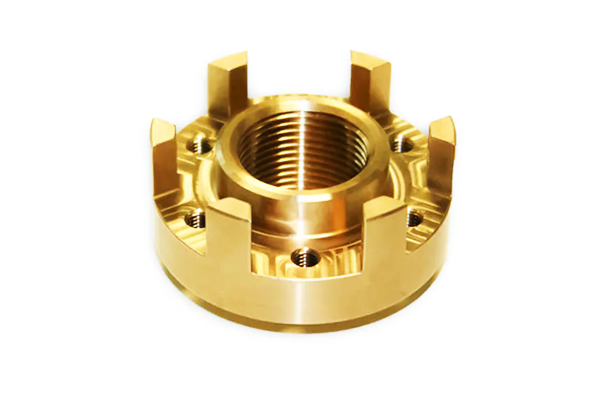
Mechanica aes coniungens:
- Opima machinabilitas aeris specimen pro . facit staminea hospites, maxime in fluidum pertractatio systemata ut pipe juncturas, valvulae, et sensorem insterni.
- Press Vices communiter in humili ut- modice onus applicationes.
Ductilis aes permittit levi deformatione elastica in insertione, cursus fovere et tremor repugnans iuncturam.
Mechanica aenea coniungens:
- Ex eius altius duritiem et fortitudinem, aere in gravibus-officium applicationes (E.g., housing, valvulae marinae) saepe confidunt in filo robusti formae et artius press-apta tolerances.
- Admixtus aeneus quasi durius manganese aes vel beryllium aeneum requirere precise machining ac interdum PRAEGRUS de housings ad enable facilius impedimento vicium non inducendo rimas.
Collatio:
- Post secare Volo: Aes - high (300-400 SfM); Aes - modicus (150-250 SfM)
- Torcular Fit TOLERATIO Range (ad -25 mm scapi): Aes ~25-50 µm; Aes ~15-35 µm
Tenaces Bonding Compatibility
Aenea Tenaces Bonding:
- Aes vincula bene epoxies, cyanoacrylates, et anaerobic adhesives, maxime humilis accentus ecclesiis.
- Ad optimos eventus:
-
- Tersus cum isopropyl alcohol vel acetone
- Leviter atteritur superficies ad augendam contactum aream
- Applicare tenaces et Fibulae pro 5-30 minuta fretus formula
Applications includit ornamenta aggeris, gauges dial, et emblemata structurae.
Aes tenaces Bonding:
- Aes plus requirit restrictius superficiem prep ex celeri oxydatum formation.
-
- Commendatur: Chemical Etching (E.g., Acidum phosphoricum) aut GLAREA uredine per immediate compages.
- Summus vires epoxy adhesives per elongationem >5% praeferuntur, maxime structural seu vibrationis-prone articulis.
Idoneum for instrumentum adiicit, structuram principalem reparatione, et es officinae, maxime ubi glutino non posse.
11. Clavis Industrial Applications of Brass vs Bronze
Aes et aes locum suum meruerunt in industria moderna per saecula certae operationis.
Distinctas commixtiones vires mechanicas, corrosio resistentia, et operabilitatem faciunt necessarias in amplis partibus.
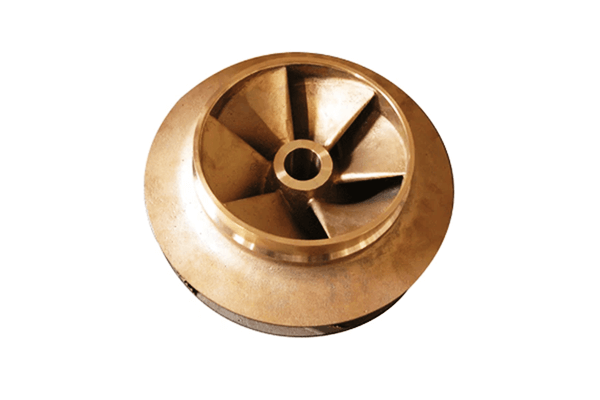
Industrial Applications of Brass
Plumbing et fluida pertractatio Systems
Est optimum machinabilitas aeris, corrosio resistentia in scatere aqua, et signandi facultatem facere metallum electionis pro components sicut:
- Pipe caerimonias
- Valvulae
- Faucets
- Cogo manicas
- Aspersor nozzles
Electrical and Electronics Industry
Bonum aes conductivity electricae et proprietates non magneticae ideales sunt pro ferramentis electricis, ut:
- Terminatio caudices ac bases
- Connectors et switch contactus
- Cable lugs et grounding iuncturas
- Typis circuitus tabula (Pcb) standoffs
Subsecutio Instrumentorum et Horologiorum
Eius stabilitas dimensiva et attritus humilis notae suum usum in se sustinent:
- Anni et horologium rotae
- Calibration spherae
- Alternis sermonibus et bezels
Architecture et Hardware decorativi
Aestheticum aureum aestheticum et resistentia obtrectationis permittit in usu diuturno:
- Ostium tractat et seras
- Handrails et architecturae genere
- Instrumenta musica (tubas, cornibus)
- Lux adfixa et decentius grilles
Automotive et Aerospace Components
Aes adhibetur ubi electrica perficientur et corrosio resistentia critica sunt:
- Cores radiator et elementa calefacientis
- Fregit versus caerimonias
- Cibus sensorem insterni
Industry munitionis et defensionis
Ob suam ductilis et resistentiae corrosio, aere late in:
- Adapter casibus
- Testa casings
- Fuse components
Applications industriae aeneae
Gustas et bushings
Admixtiones aeneae, praesertim stanneae et plumbeae, offerunt optimum lapsum resistentiae et embedability., essentialis:
- Patet sleeve gestus
- mitte washers
- Dux bushings in systemata hydrau
Marinus et Offshore Engineering
Superior resistentia aquae salsae aeneae corrosionem facit necessarium:
- Propellers et impulsores
- Valvae sedes et sentinam insterni
- Limbis marinis components
- Submersible motricium casings
Gravis Equipment et Industrial Machinery
Nam summus onus, humilis-celeritate applicationes, aereum auxilium reducere frictio et vestium:
- Gears rotae et calces anni
- Illapsum laminis lapsum
- Portans claustris et sigillis
Aerospace et Defensionis Systems
Aes proprium sicut aluminium aes et beryllium aes adhibentur in applicationibus criticis ubi vires et lassitudo resistentia sunt key:
- Structural fasteners
- Princeps accentus portum calces bushings
- Electrical connexiones cum proprietatibus vere
Sculptura et Art
Propter proprietates deiectionis et formationis patinae, aes est materia traditionalis et aetatis nostrae:
- sculpturae monumentales
- Numismata et tabulae commemorativae
- Dejectiones artis et restitutiones
Additiva Vestibulum et Provectus Fabricatio
Cum incrementum metallum 3D excudendi, quaedam antemna aenea explorantur:
- Nativus es pieces
- Summus lapsum tooling
- Prototyping partium mechanicarum cum valore aesthetico
12. Pros and Cons of Aere vs Brass
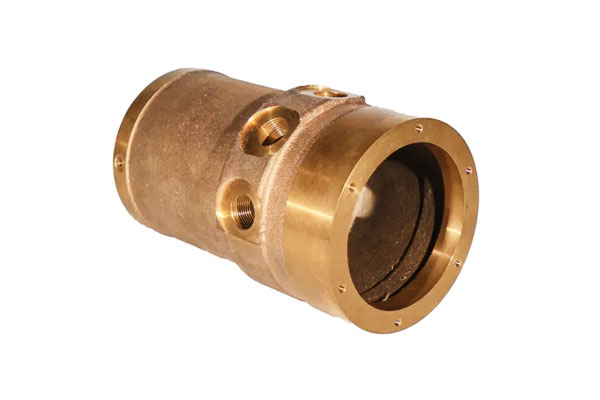
Aeneas Pros:
- Optimum machinability
- Summus conductivity
- PROFORDable
- Bonum aesthetic varietate
aes Cons:
- Dezincification periculo
- viribus inferioribus
- Prone obtrectare
aenea Pros:
- Princeps vires et gerunt resistentia
- Superior corrosio resistentia
- Praeclara ad gestus et partes marinas
- Patina pulchra in tempore
aes Cons:
- Magis ut machina
- Magis pretiosa
- Inferius scelerisque et electrica conductivity
13. Collatio mensam: Brass vs Bronze
| Genus | Aes | Aes |
| Basis compositionem | Aes + Zinc | Aes + Tin (aut aliis elementis) |
| Commune offering elementa | Zinc, Prendo (liberum machining), Nickel (nickel argentum) | Tin, Aluminium, Silicon, Phosphorus, Manganese, Beryllium |
| Color | Aurea clara flavo (altius Zn*) | Rufo-brunneae, nunc aureum; patinas in tempore |
| Densitas (G / CM³) | ~8.4–8.7 | ~8.7–8.9 |
| Tensile viribus (MPA) | 300-550 | 350-800 (aluminium aereum usque ad 900 MPA) |
| CEDITAS (MPA) | 100-350 | 200-600 |
| Elongatio (%) | 20-50 | 10-35 |
| Durities (Brinell HB) | 50-150 (variatur per alloy) | 60-210 (Aluminium aes superet 200 HB) |
| Scelerisque conductivity (W / m K) | ~100-130 | ~50-70 (plumbum aereum); sicut humilis 35 aliquot aluminium aera |
| Electrical Conductivity (%Iacs) | 28-40% | 7-15% (multo minus propter tin vel aluminium) |
| Corrosio resistentia | Bonum; dezincification in ammoniaci susceptibilis / SAL | Praeclarus, maxime in marine environments; immunes dezincification |
| Labos (Machinabilitas) | Praeclarus, praesertim aereo plumbeo | Moderate ad bonum; late per offensionis genus |
| CASTITIA | PERPLICENTER | Praeclarus, maxime artis dejectiones |
| Frigus Workability | Praeclarus; trahi potest, impressit, carmen | Moderor; magis limitata ad durius aera |
| Cost | Plerumque inferioribus | Vulgo altiorem, maxime aluminium et proprium aera |
Sana Quality (Musical Use) |
Splendida, acuti voce (tubas, cornibus) | Warm, sonorum (campanis, cymbala, gongs) |
| Patina Institutio | Tarnishes in tenebris brunneis vel viridi in tempore | Formae aesthetically placentes viridi / hyacintho patina per longa tempora |
| Magna permeability | Magnetica | Magnetica (quidam aluminium aera possunt esse debiliter magneticum) |
| Venditor / Brazing | Libenter solidantur; Stannum potest LEVIFICATIO in welding | De more brazed; specialized filler alloys opus est summus perficientur |
| Marine Convenientia | Limited solum specifica alloys (E.g., navalis aereus) | Optimum-specimen marinis expositae partes |
| Clavis Industrial Applications | Plumbing Fittings, musicis, electrica connectors | Gestus, bushlings, marine propellers, sculptura, summus onus applicationes |
| Recyclabality | Valde recyclable | Valde recyclable |
14. Conclusio
aere et aere, dum chemica similis esse aeris-fundatur alloys, offerre penitus proprietates et applicationes.
aes excellit in conductivity, Formabilitas, et sumptus, faciens illud specimen pro electrica et plumbing usus. Aes eminet in fortitudo, corrosio resistentia, LIBER
Discriptis inter aes et aes accuratam intelligentiam requirit perficientur necessaria, condiciones environmental, et sumptus angustiis.
Per applicationes ad aligning materiae applicationes, engineers and designers potest efficere longitudinis vitae, reliability, et aesthetic valorem in products.
FAQs
Quod melius est: aenea vel aenea?
Dependet in applicatione.
- Aes melius applications postulantes bona machinability, Electrical Conductivity, et a * clara, specie decorat, ut plumbing, musicis, et electrica connectors.
- Aes aptior est summus vires, GERBOR, et ROSIO applications, praesertim marinus, afferentem, et gravibus machina ambages.
Breviter:
- Eligere aes ad aestheticam facilitatem formandi.
- Eligere aes pro viribus, diuturnitas, et dura environments.
Aes an aes pretiosius?
Aes plerumque carior est aere.
- Hoc est debitum ad superiora contenta tin, aluminium, aut aliis elementis proprium sicut beryllium, quae pretiosiora sunt cadmiae (in aere).
- Insuper, aere admixtos tendunt ad plures processus complexi et saepe in critica vel summus perficientur applications, augendae pretium.
Quomodo dicis si aes aut aes est??
Hic sunt key vias distinguere inter aes et aeramentum:
- Color:
-
- Aes: Yellow ad aurum, fretus contentus cadmiae.
- Aes: Rufo-brunneae, saepe obscurior vel cum patina.
- Sonus (Tonal Quality):
-
- Percutiamus rem leniter: Aes saepe sonat altiora castra et "ringy", dum aes dat altius, sono magis sono.
- Magnetismus:
-
- utrumque magnetica, at mixturas aereas contineant vestigia ferri vel alia elementa quae parvam morum magneticam exhibent.
- Scintilla Test (si tutum praestare):
-
- aes brevior, ruber scintillae, dum scintillae aereae lucidiores sunt et magis albo-flavae.
Cur aes non iam late usus est??
Aes adhuc usus est, sed:
- Hoc factum est minus commune in dolor products ex altior materia costs et oriri magis oeconomicae facere sicut aes, Plastics, et immaculatam ferro.
- Aes, ut facilius machinam et vilius producere, habet pro aere in multis applicationibus non criticis ubi vis ultra alta vel corrosio resistentia non est necessaria.
- In modern engineering, aere servatum est certis muneribus (E.g., marine propellers, bushlings) ubi propriae proprietates singulares sunt essentiales.



